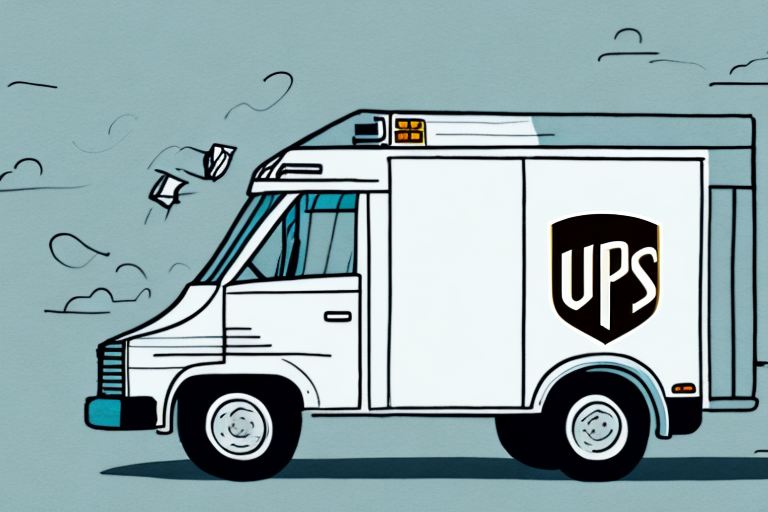Understanding UPS Small Packing Shipping Rates
If you're a small business owner, you're probably familiar with UPS and their shipping rates. However, you might not be aware of how they calculate their small packing shipping rates, which can greatly affect your bottom line. In this article, we'll explain how UPS calculates small packing shipping rates and what factors can affect them. We'll also provide tips for reducing your UPS small packing shipping costs and compare these rates to those of other carriers. Additionally, we'll discuss the different types of UPS small packing shipping services, how to properly package your shipments, and mistakes to avoid that can increase your rates. Furthermore, we'll explore how you can negotiate better pricing with UPS for small packing shipments and how to track and manage your UPS small packing shipments. By the end of this article, you'll have a comprehensive understanding of UPS small packing shipping rates and how to optimize your shipping strategies with this carrier.
How UPS Calculates Small Packing Shipping Rates
UPS calculates small packing shipping rates based on several factors, including the weight of the package, the dimensions of the package, the distance the package is being shipped, and the speed of the service selected. They use a pricing algorithm that analyzes these variables to determine the final rate. Additionally, UPS charges a minimum rate for small packages based on the weight of the package. This minimum rate ensures that the cost of handling and transporting the package is covered.
Another factor that can affect small packing shipping rates is the type of item being shipped. UPS may charge additional fees for items that require special handling, such as hazardous materials or fragile items that need extra packaging. It's important to properly label and package your items to avoid any unexpected fees or delays in shipping.
UPS also offers various discounts and promotions for small package shipping, such as volume discounts for businesses or special rates for certain destinations. It's worth checking their website or contacting customer service to see if you qualify for any of these discounts.
Factors That Affect UPS Small Packing Shipping Rates
Several factors can affect the cost of your UPS small packing shipping rates:
- Package Weight and Size: Heavier and larger packages incur higher rates due to increased handling and transportation costs.
- Shipping Distance: Shipping to remote areas or international destinations can increase costs due to extra handling and customs fees.
- Shipping Speed: Faster shipping methods, such as overnight delivery, are more expensive than standard options.
- Package Type: Items requiring special handling, like hazardous materials or fragile goods, may attract additional fees.
- Peak Shipping Periods: Rates can increase during high-demand periods, such as holidays.
Understanding these factors can help you make informed decisions to optimize your shipping costs.
Tips for Reducing Your UPS Small Packing Shipping Costs
Here are several strategies to help reduce your UPS small packing shipping costs:
- Optimize Package Size and Weight: Reduce the size and weight of your packages as much as possible to lower costs.
- Select Slower Shipping Methods: Choosing a slower shipping option can significantly lower your shipping expenses.
- Ship in Bulk: Taking advantage of volume discounts by shipping multiple packages together can reduce overall costs.
- Use UPS Online Tools: Utilize UPS's online tools to compare rates and delivery times to find the most cost-effective shipping method.
- Leverage UPS Packaging Supplies: Using UPS's packaging supplies can help reduce the size and weight of your package.
For more detailed strategies, visit the UPS Shipping Tips page.
Comparing UPS Small Packing Shipping Rates to Other Carriers
When determining the best carrier for your small packing shipments, it's essential to compare the rates of different carriers:
- USPS: Generally more affordable for small packages but may offer slower delivery times compared to UPS.
- FedEx: Offers competitive rates and a wide range of services, similar to UPS.
- DHL: Often provides more competitive rates for international shipments.
Additionally, consider the additional services and features each carrier offers. For example, UPS provides a variety of packaging options, including their own branded boxes and envelopes, which can offer added protection for your shipments. They also offer tracking and insurance options, providing peace of mind and ensuring your package arrives safely and on time.
Another critical factor is the customer service provided by each carrier. UPS is renowned for its excellent customer service, with knowledgeable and helpful representatives available to assist with any questions or concerns. This can be especially important when shipping valuable or fragile items that require special handling.
Understanding the Different Types of UPS Small Packing Shipping Services
UPS offers several small packing shipping services, including:
- UPS Next Day Air: Guaranteed overnight delivery within the next business day.
- UPS 2nd Day Air: Delivery within two business days.
- UPS Ground: Cost-effective ground shipping with delivery times based on distance.
Additionally, UPS provides specialized services such as UPS My Choice, which allows greater control over delivery options and real-time tracking of shipments.
For international shipping, UPS Worldwide Express offers fast and reliable shipping to over 220 countries and territories, including customs clearance and door-to-door delivery.
Businesses that require frequent shipping might benefit from UPS CampusShip, a web-based shipping solution that allows easy management and tracking of shipments across multiple locations.
How to Properly Package Your Shipments for UPS Small Packing Shipping
Proper packaging is crucial for the safe and efficient shipment of your UPS small packages. Follow these guidelines to ensure your shipments arrive intact:
- Secure Packaging: Use appropriate materials such as bubble wrap or packing peanuts to securely wrap the contents.
- Sturdy Boxes: Ensure the box is strong enough to hold the weight of the contents without damage.
- Proper Labeling: Attach the shipping label securely and include the recipient's address and UPS tracking number.
- Optimal Box Size: Use a box that fits the contents snugly to prevent shifting during transit.
- Fragile Items: For items like glassware or electronics, use extra padding to protect against breakage.
By adhering to these packaging standards, you can minimize the risk of damage or delays during shipping. For detailed packaging guidelines, visit the UPS Packaging Guidelines.
Common Mistakes That Can Increase Your UPS Small Packing Shipping Rates
Avoid these common mistakes to prevent unnecessary increases in your UPS small packing shipping rates:
- Incorrect Measurements: Ensure you accurately measure and weigh your packages to avoid rate miscalculations.
- Poor Packaging: Inadequate packaging can lead to damage and additional handling fees.
- Inaccurate Shipping Information: Double-check addresses and other shipping details to prevent delays and additional costs.
- Not Utilizing Discounts: Failing to take advantage of available discounts and promotions can result in higher shipping costs.
Regularly reviewing UPS's available discounts and ensuring accurate package details can help you maintain optimal shipping rates.
Negotiating Better Pricing with UPS for Small Packing Shipments
If you ship frequently with UPS, negotiating better rates can lead to significant savings. Here are some strategies:
- Volume Discounts: Contact a UPS sales representative to discuss potential volume discounts based on your shipping frequency.
- Special Offers: Inquire about any special promotions or offers that may apply to your shipping needs.
- Third-Party Services: Consider using a third-party shipping service that negotiates rates on your behalf.
- Use UPS Online Tools: Utilize UPS's online resources like UPS My Choice and UPS Marketplace Shipping to access discounted rates and streamline your shipping process.
- Free Packaging: Take advantage of UPS's free boxes and envelopes to reduce overall shipping costs.
By leveraging these options, you can achieve more favorable pricing for your small packing shipments. For more information, visit the Negotiating UPS Rates page.
How to Track and Manage Your UPS Small Packing Shipments
Effective tracking and management of your UPS small packing shipments ensure timely and reliable delivery. Follow these best practices:
- Use the UPS Website or Mobile App: Track your packages in real-time to stay updated on their delivery status.
- UPS My Choice: Customize your delivery preferences and receive estimated delivery windows.
- Automate Tracking: Set up automated notifications to receive updates on your shipments via email or SMS.
- Maintain Proper Packaging: Follow UPS's packaging guidelines to reduce the risk of damage and delays.
- Understand International Requirements: Research and comply with customs regulations and requirements for international shipments to avoid delays and additional fees.
By implementing these strategies, you can efficiently manage your UPS small packing shipments and ensure they reach their destinations without issues. For more tracking and management tools, explore the UPS Tracking Tools.
By following these best practices, you can optimize your UPS small packing shipping rates and ensure efficient and reliable delivery of your packages.




















